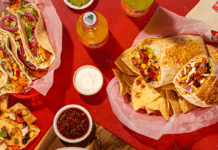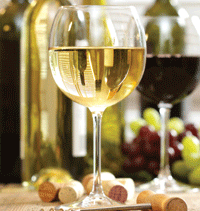Today’s consumer are more savvy, educated and adventurous, so the list of wine trends continues to grow. take a look at a list of wine categories that may influence your next wine list.
1. The classics
Pinot Grigio, Chardonnay, Pinot Noir, Shiraz/Syrah and Cabernet Sauvignon continue to win fans, which makes sense as some the world’s finest wines are made from these grapes. California Cabernet Sauvignon, Italy’s Pinot Grigio and Chardonnay from around the globe, are wines that sell themselves. It’s an old trend made new again.
2. Local sparkling
The market is witnessing a growth in popularity of locally produced sparkling wines. Many of these bubbles are as good as real Champagne — made from the same grapes and using the same production methods with secondary fermentation in the bottle. Some aren’t made with traditional Champagne grapes, Riesling and Sauvignon Blanc, et cetera, but still make for a lively, zesty and refreshing summer fizz. Interestingly, since Ontario’s cool-climate grape-growing regions are favourable, Icewine can be used as “dosage” — a sweetening element commonly used in Champagne — for those looking for a unique local speciality and approach.
3. Fortified wines
Sherry is gaining momentum, as proven with the opening of Spanish tapas-style restaurants, such as Bar Isabel in Toronto and Segovia Tapas Bar and Restaurant in Winnipeg. Many people are recognizing the versatility of this wine, its many styles and its high compatibility with various types of food. Made in Jerez, Spain, sherry is created by employing the “floor” technique, which is a process whereby a thick film of yeast forms atop the wine since the barrels holding the alcohol are not topped up; this process creates sherry’s distinctive oxidative nuances.
4. Organic, biodynamic and natural wines
The foodservice trend toward sustainability continues to extend to organic, biodynamic and natural wines, which are increasingly in vogue. Organic wines are made without the use of artificial chemicals, such as fertilizers and pesticides; biodynamic wines respect the principles of biodynamic agriculture, which is based on nature’s ecological and energetic aspects; and natural wines are made with minimal or no chemical and technological intervention. Such bottles of vino aren’t without controversy, especially when it comes to the natural variety. Despite growing its presence in the market, natural wines are the subject of conversations among diners and spark debate among professionals, because they are made in partnership with nature, which is riskier than working with technology. Simply put, there are memorable natural wines, but some of the worst wines come from this category, too, so beware.
5. Sweet (red) wines
There’s a market for red wines that are as sweet as blueberry pie. Sweet red wines are just that — sweet, with high amounts of residual sugar. Think of sweet red Moscato, late-harvest Zinfandel, Cabernet, Shiraz, sparkling Lambrusco, the naturally sweet red wines of Georgia or even a slightly sweet Beaujolais Nouveau. These wines are becoming popular, especially among new wine drinkers. On the downside, the labels of these sweeter reds don’t list sugar and sweetness levels, so they are passing as dry wine, which can sometimes cause confusion. l
Zoltan Szabo is a Toronto-based sommelier who offers consulting and hands on services to restaurants, hotels, private clubs and collectors. He can be reached at [email protected].



















